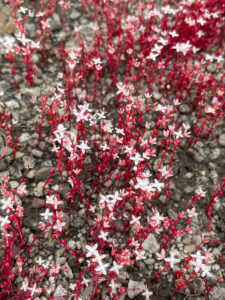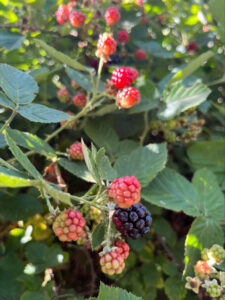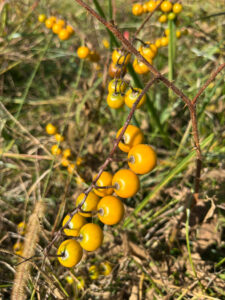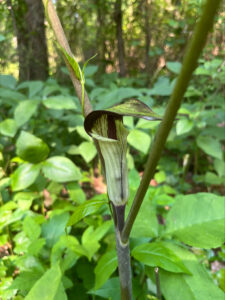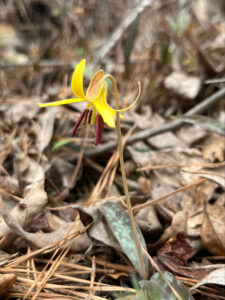Trees
The National Heritage Area is home to acres of secondary growth forest, meaning forest that is returning after the land has been cleared (in this case, for past agriculture). The National Heritage Area has a mix of pine and hardwood forest spread throughout the greenspace. Common species include loblolly pine, sweetgum, numerous oaks and hickories, tulip poplars and many others. These trees put on a magnificent display as the seasons change. In the spring fresh young buds form and flowers abound. Summer brings a lush green canopy and shady retreats. Most of the trees in the area are deciduous, meaning they lose their leaves in the fall. As the cold sets in the leaves turn golden orange and fiery red and this lovely sight is one of the reasons that fall is one of the busiest times in the Heritage Area. In the winter most of the trees are dormant, however the conifers retain their deep green needles. The trees here are pretty special and you even have a unique way to see them! Panola Mountain State Park offers tree climbing excursions.
Throughout the year trees provide critical habitat and food for many of the animals that live here. Even after a tree falls the decomposing wood offers food for insects and mushrooms which then become food for other animals. See below for pictures of some of the amazing trees and other plants you can see in the Heritage Area.
Flowering Plants
Flowering plants inhabit all sorts of environments in the Heritage Area including granite outcrops, forests and even cracks in the sidewalk. When you see so many types of flowering plants it isn’t surprising to learn that they make up the majority of most terrestrial habitats on the face of the planet. They provide food sources and shelters for the organisms that live in these habitats.
Butterflies are often found sipping nectar from flowers here in the Heritage Area. In fact, a recent butterfly count in the grassland-restoration area at Panola Mountain State Park recorded 60 species of butterflies. This means that Panola may be in the top 2% of butterfly-count locations in the entire country! Come out and see our beautiful flowers and the animals that live with them.
Riparian Vegetation
The Heritage Area contains many creeks, a portion of the South River and several lakes. The area along river margins and banks is called the riparian zone and the plant habitats and communities there are called riparian vegetation. Riparian zones are important in ecology because they help keep soil from washing away, provide shelter and food for animals and increase biodiversity.
Would you like to get a firsthand look at these special places? You can kayak down the South River, hike to Arabia Lake, or fish at Alexander Lake.


